Image credits: All photographs © 2013 Justin Black – http://justinblackphoto.com/, and shared with express permission.
Ever wonder what a brawl at the apex of the food chain looks like? That’s exactly what photographer Justin Black captured in 2013 while on a photo expedition in the wetlands of Brazil.
Black and those he was leading on the Visionary Wild expedition watched as a 290-pound, 7-year-old male Jaguar known locally as ‘Mick Jaguar’ stalked and, ultimately, pounced on an 8-foot-long yacaré caiman alligator.
The whole story is told in this gripping set of images captured by Justin, with commentary from the man himself sprinkled in:
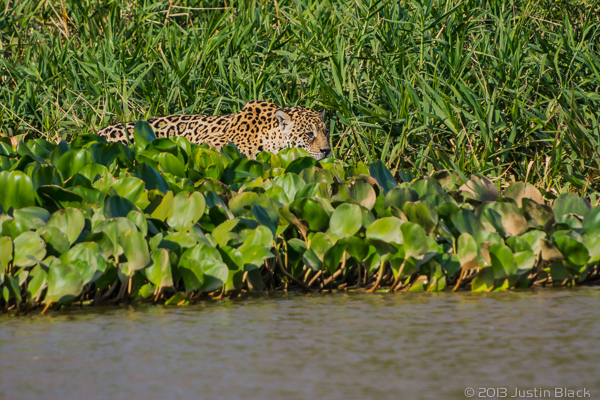
On the day of the hunt we spotted Mick as he emerged at the far end of a long sandy beach upstream from a channel that connected the main river to a large oxbow pond.
[…]
As he walked down the beach, Mick quickly switched to hunting mode, adopting a cat’s low, slow stalk.
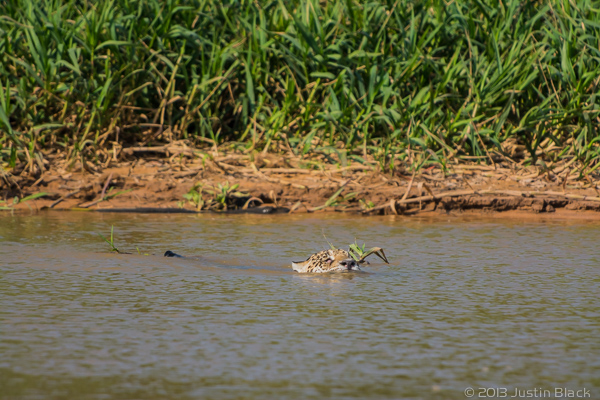
By the time he entered the hyacinth at the water’s edge, we still didn’t know exactly what he was after. He paused and sized up his options.
Then, quietly but with purpose, he entered the channel and began swimming toward—unbelievably—the largest caiman on the beach, close to eight feet long and probably over forty years old.
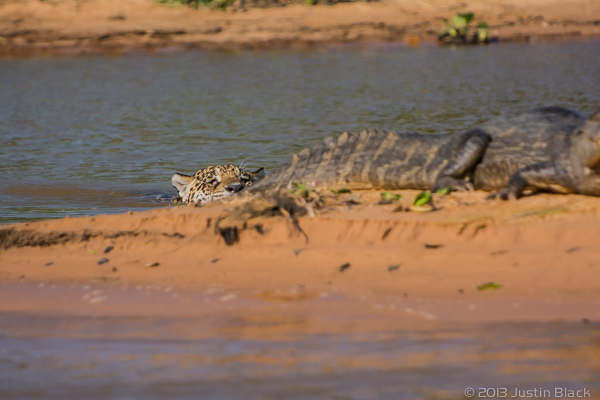
He crossed the channel in 24 seconds, moving into position directly behind the caiman in its blind spot. Mick’s feet once again found purchase on the sand and…
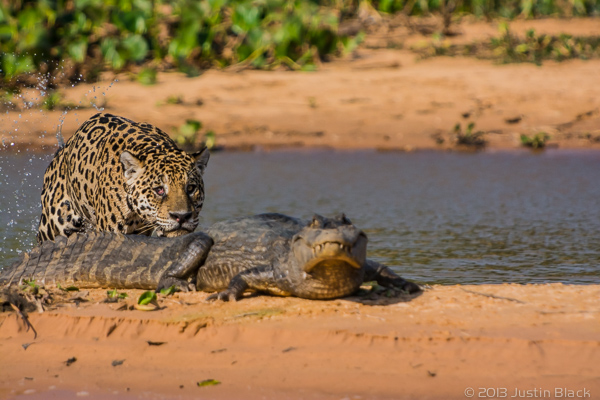
…he exploded from the water and onto the caiman’s back, swinging his right paw into its side to hook into it with his claws. His left paw followed immediately thereafter.
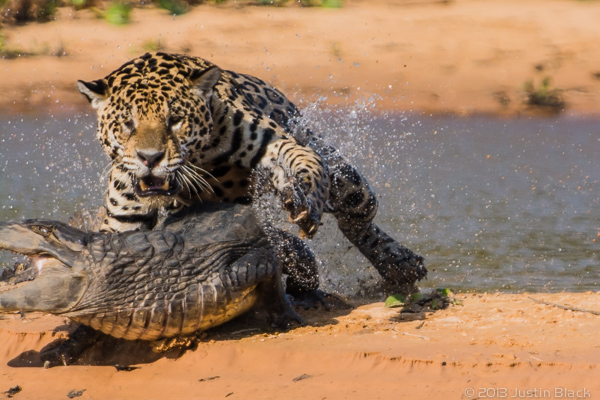

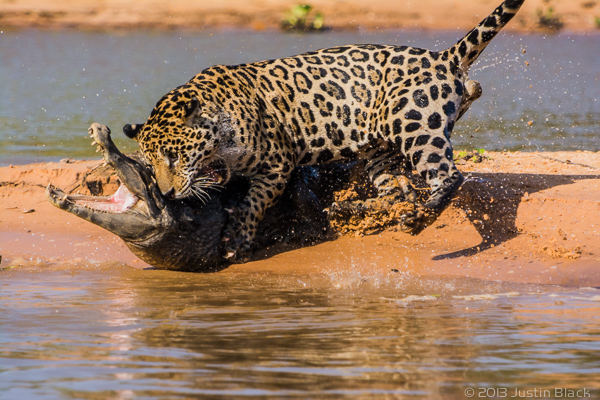
As Mick’s momentum carried them both into the water at the river’s edge, he went for a killing bite at the base of the caiman’s skull.
[…]
His jaws found their mark, and in one powerfully fluid motion, he lifted the front half of the caiman’s body off the ground, spun it around to his left, and started trotting back toward the channel.
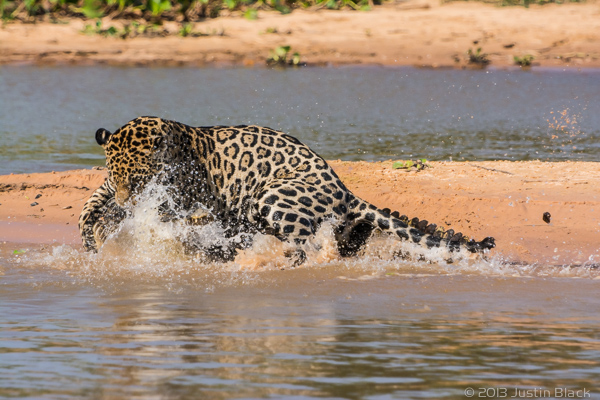
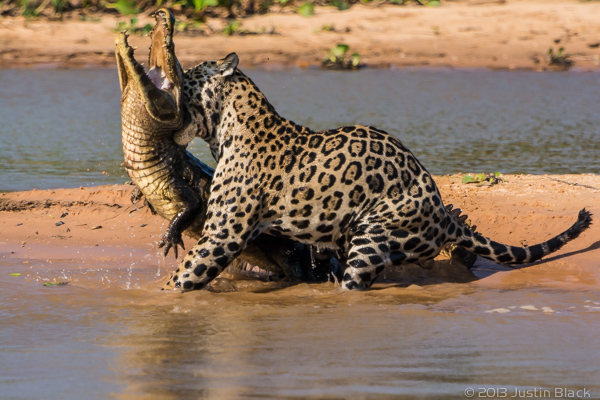
The caiman weighed around 150lbs., but Mick appeared to handle it as easily as a big dog with a chew toy.
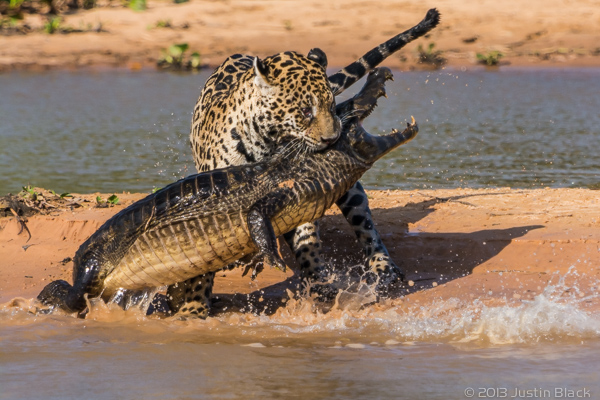
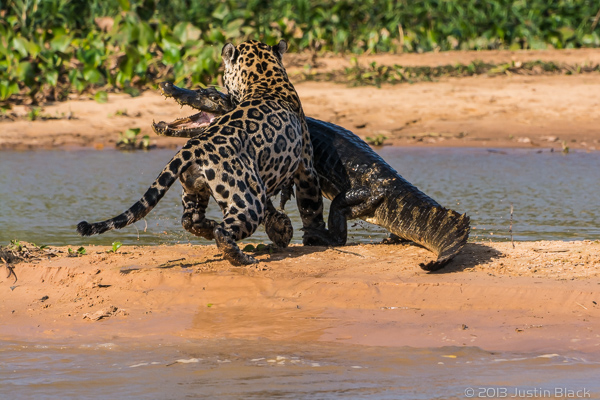
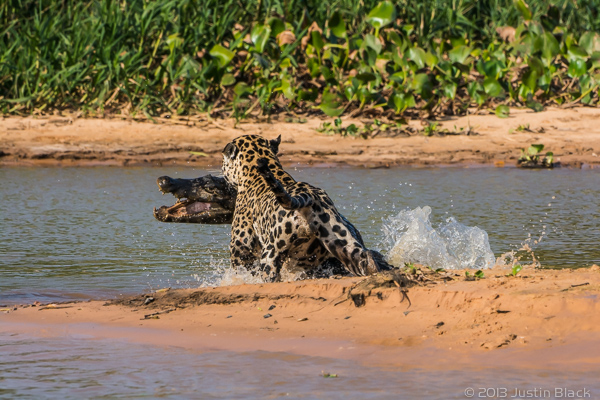
As the caiman looked back at his attacker, Mick pushed it into the channel broadside, pushing a bow wave ahead of them. Amazingly, this crossing took no longer than the first. Mick walked up the sandy bank, into the tall grassed behind the beach, most likely headed for the cover of the nearby forest.
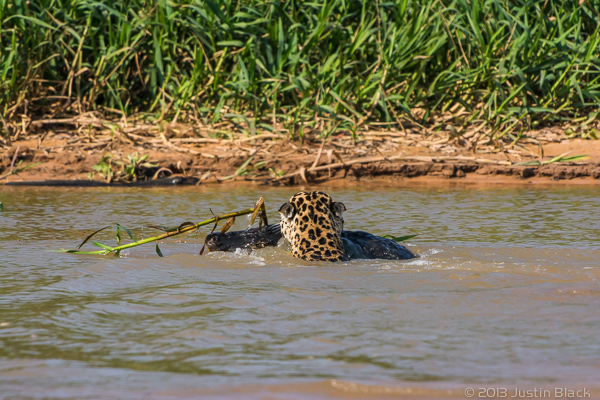
Curious what made this expedition so successful? According to Justin’s Trip Report, it’s a mix of conditions that makes this an incredible place to photograph Jaguars:
The jaguar and their prey occur at maximum biological carrying capacity, the cats aren’t hunted in this particular area, two of their major prey species—caiman and capybaras—are on the riverbanks during the daytime, and sport fishermen have been plying the rivers in motor boats for years.
So, there are a lot of cats drawn to the rivers by a lot of prey, they aren’t afraid of humans in boats, and they’re active and visible in good light. Nowhere else are the conditions so good for seeing jaguars, much less spending considerable time with them and photographing them from relatively close range.
That’s how Justin, his partner Jeff Foott, and the small groups they lead are able to capture photos like these. Incredible.
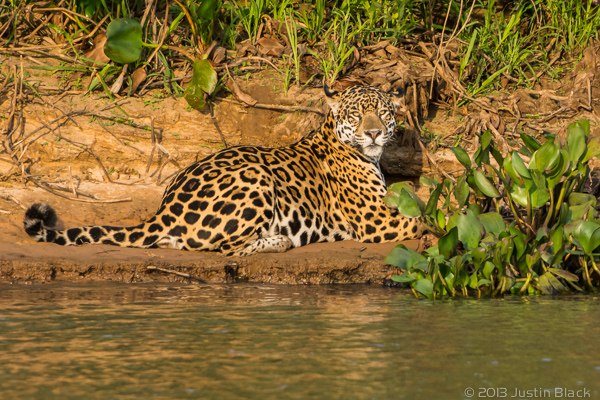
The coolest part is that you can join them on their next expedition. There’s no guarantee that you’ll see a massive jaguar attack a 40-year-old, 150-pound caiman, but then again you might.
Click here to find out about the upcoming Visionary Wild jaguar expeditions.
And now, since you were awesome and stuck with the post to the very end, we have a little bonus… the video. Yes, the entire thing was also captured on a video that was shared, with commentary, by National Geographic.
[H/T PetaPixel]

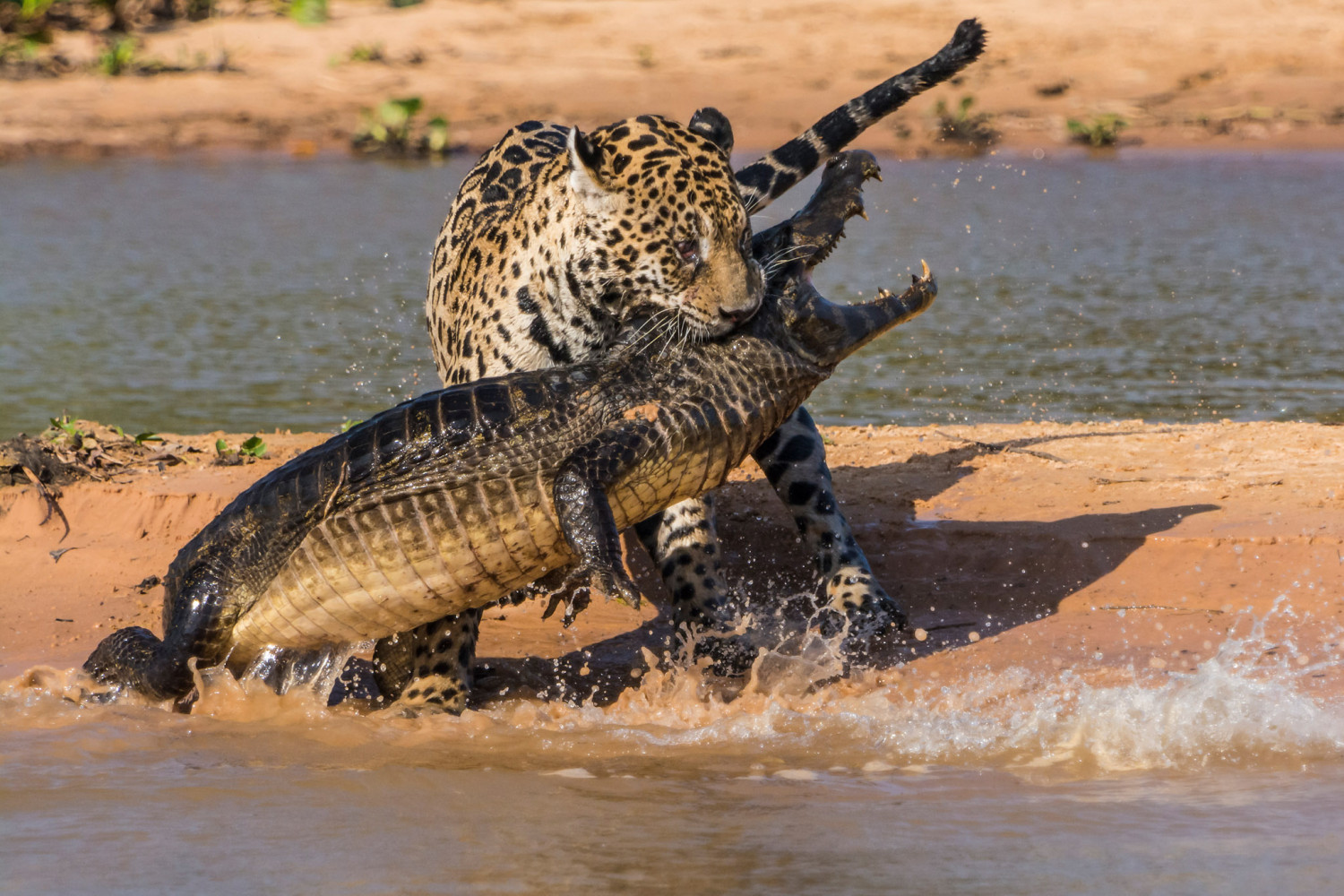



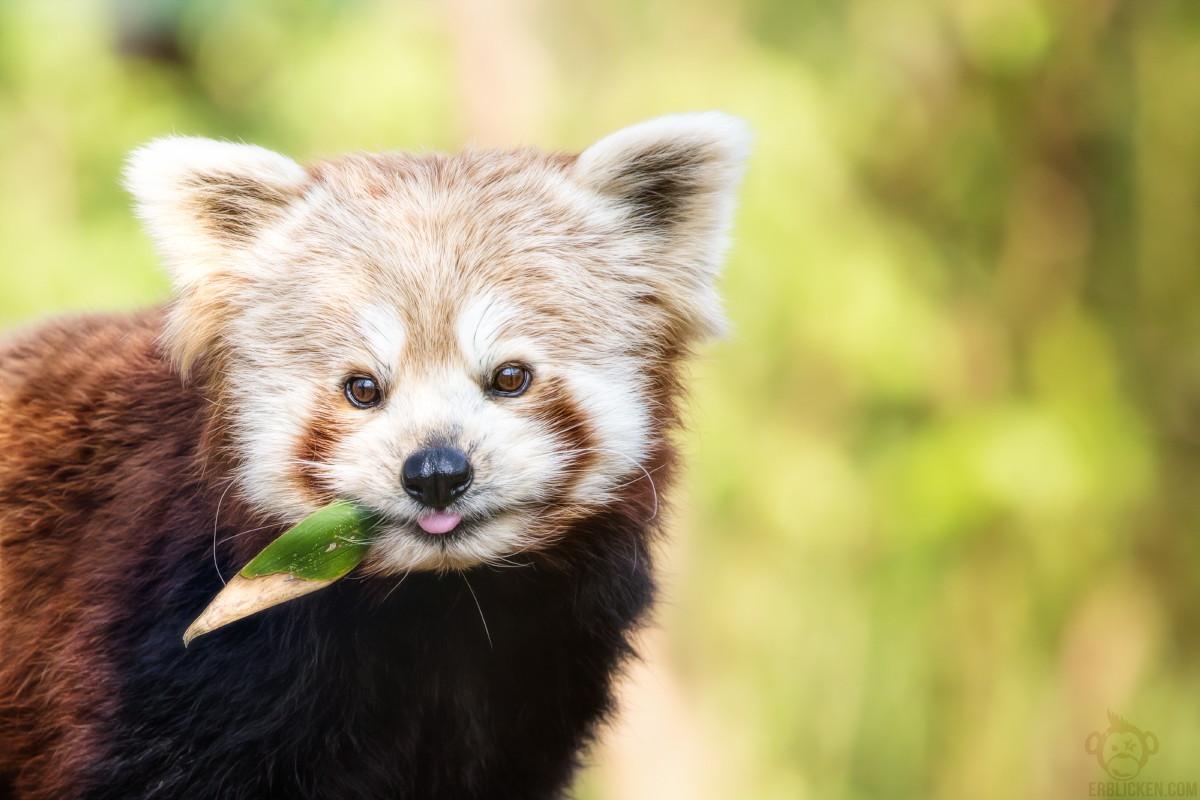
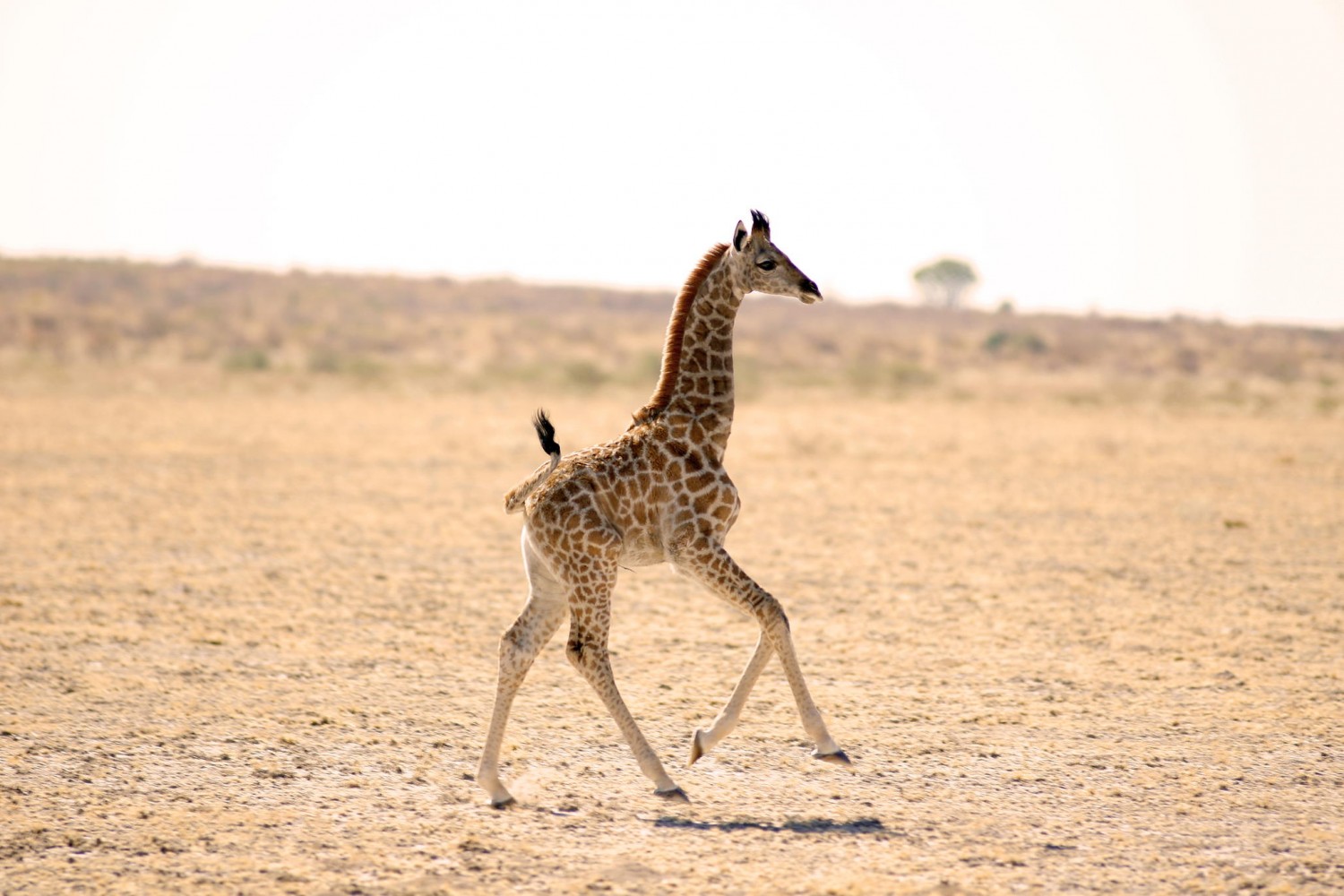
Leave a reply